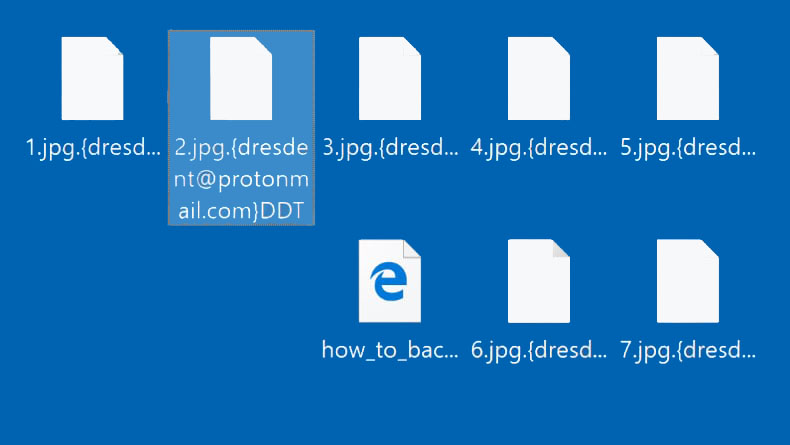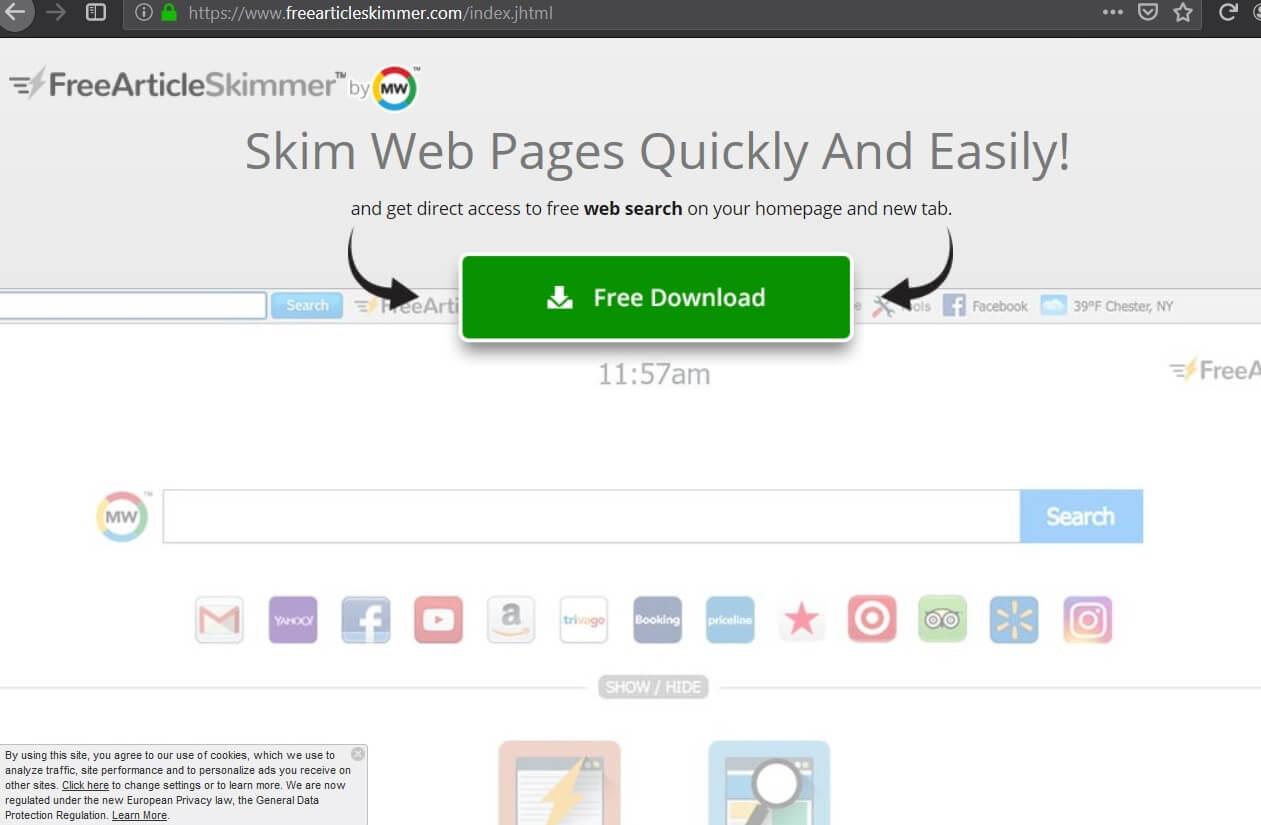What is DDT ransomware? And how does it execute its attack?
DDT ransomware is yet another dangerous ransomware threat that could encode all the important data in a computer, making them inaccessible. It seems to be a new variant of the infamous GlobeImposter 2.0 ransomware. It adds a “.{[email protected]}DDT” extension in every file it encrypts. Apart from the email address and extension it uses, there are no other significant changes in this new variant as it still follows the same pattern as other variants of GlobeImposter 2.0 in executing its attack.
Once it manages to invade a computer, it starts to execute its attack by dropping its malicious payload in the system which will establish a connection between the infected device and a remote Command and Control server where it also downloads additional malicious files that helps it in executing its attack. These malicious files also make alterations in the Windows Registry in order to run on every system boot. Once these changes are applied, the search for files to encrypt began. After finding its targeted files, it encrypts them using a strong encryption algorithm in locking its targeted data and adds the “.{[email protected]}DDT” extension after it completes the encryption. Following data encryption, the crypto-virus creates a file named “how_to_back_files.html” that contains the following content:
“YOUR PERSONAL ID
–
ENGLISH
YOUR FILES ARE ENCRYPTED!
ALL YOUR IMPORTANT DATA HAS BEEN ENCRYPTED.
To recover data you need decryptor.
To get the decryptor you should:
Send 1 test image or text file [email protected].
In the letter include your personal ID (look at the beginning of this document).
We will give you the decrypted file and assign the price for decryption all files
After we send you instruction how to pay for decrypt and after payment you will receive a decryptor and instructions We can decrypt one file in quality the evidence that we have the decoder.
Attention!
Only [email protected] can decrypt your files
Do not trust anyone [email protected]
Do not attempt to remove the program or run the anti-virus tools
Attempts to self-decrypting files will result in the loss of your data
Decoders other users are not compatible with your data, because each user’s unique encryption key”
How does DDT ransomware spread over the web?
DDT ransomware could spread the web using various distribution methods although it is most likely distributed through spam email attachments. The cyber crooks create an email server used to send the malicious email containing the corrupted attachment. Thus, it is strongly advised that you check the sender of the suspicious email first before you open them or better yet, delete the suspicious emails as soon as they were pop-up in your inbox. Aside from malicious spam emails, DDT also distributes its malicious payloads using the following techniques:
- Fake software and fake software updates
- Exploit kits
- Malvertising
- Trojans
The best way to avoid infections like DDT is to make sure that you have a good antivirus and anti-malware program like [product-name] and create extra copies of important files on different location or storage. It is also important to keep your system updated and to enable automatic updates for it prevents hackers from exploiting your system vulnerabilities.
Kill DDT ransomware from your computer using the removal guide provided below as well as the advanced removal steps that follow.
Step 1: First, tap the Ctrl + Shift + Esc keys on your keyboard to open the Task Manager.
Step 2: Under the Task Manager, go to the Processes tab and look for any suspicious-looking process that takes up most of your CPU’s resources and is most likely related to DDT ransomware.

Step 3: After that, close the Task Manager.
Step 4: Tap Win + R, type in appwiz.cpl and click OK or tap Enter to open Programs and Features under Control Panel.
Step 5: Under the list of installed programs, look for DDT ransomware or anything similar and then uninstall it.

Step 6: Next, close Control Panel and tap Win + E keys to launch File Explorer.
Step 7: Navigate to the following locations below and look for DDT ransomware’s malicious components such as “how_to_back_files.html” and “[random].exe” as well as other suspicious files, then delete all of them.
- %TEMP%
- %WINDIR%\System32\Tasks
- %APPDATA%\Microsoft\Windows\Templates\
- %USERPROFILE%\Downloads
- %USERPROFILE%\Desktop
Step 8: Close the File Explorer.
Before you proceed to the next steps below, make sure that you are tech savvy enough to the point where you know exactly how to use and navigate your computer’s Registry. Keep in mind that any changes you make will highly impact your computer. To save you the trouble and time, you can just use [product-name], this system tool is proven to be safe and excellent enough that hackers won’t be able to hack into it. But if you can manage Windows Registry well, then by all means go on to the next steps.
Step 9: Tap Win + R to open Run and then type in regedit in the field and tap enter to pull up Windows Registry.

Step 10: Navigate to the following path:
- HKEY_CURRENT_USER\Control Panel\Desktop\
- HKEY_USERS\.DEFAULT\Control Panel\Desktop\
- HKEY_LOCAL_MACHINE\Software\Microsoft\Windows\CurrentVersion\Run
- HKEY_CURRENT_USER\Software\Microsoft\Windows\CurrentVersion\Run
- HKEY_LOCAL_MACHINE\Software\Microsoft\Windows\CurrentVersion\RunOnce
- HKEY_CURRENT_USER\Software\Microsoft\Windows\CurrentVersion\RunOnce
Step 11: Delete the registry keys and sub-keys created by DDT ransomware.
Step 12: Close the Registry Editor and empty the Recycle Bin.
Try to recover your encrypted files using the Shadow Volume copies
Restoring your encrypted files using Windows’ Previous Versions feature will only be effective if DDT ransomware hasn’t deleted the shadow copies of your files. But still, this is one of the best and free methods there is, so it’s definitely worth a shot.
To restore the encrypted file, right-click on it and select Properties, a new window will pop-up, then proceed to Previous Versions. It will load the file’s previous version before it was modified. After it loads, select any of the previous versions displayed on the list like the one in the illustration below. And then click the Restore button.

Make sure that you have eliminated DDT ransomware from your computer successfully as well as its malicious components by using a trusted and reliable program like [product-name]. Refer to the following guidelines on how to use it.
Perform a full system scan using [product-code]. To do so, follow these steps:
- Turn on your computer. If it’s already on, you have to reboot it.
- After that, the BIOS screen will be displayed, but if Windows pops up instead, reboot your computer and try again. Once you’re on the BIOS screen, repeat pressing F8, by doing so the Advanced Option shows up.

- To navigate the Advanced Option use the arrow keys and select Safe Mode with Networking then hit
- Windows will now load the Safe Mode with Networking.
- Press and hold both R key and Windows key.

- If done correctly, the Windows Run Box will show up.
- Type in the URL address, [product-url] in the Run dialog box and then tap Enter or click OK.
- After that, it will download the program. Wait for the download to finish and then open the launcher to install the program.
- Once the installation process is completed, run [product-code] to perform a full system scan.

- After the scan is completed click the “Fix, Clean & Optimize Now” button.











